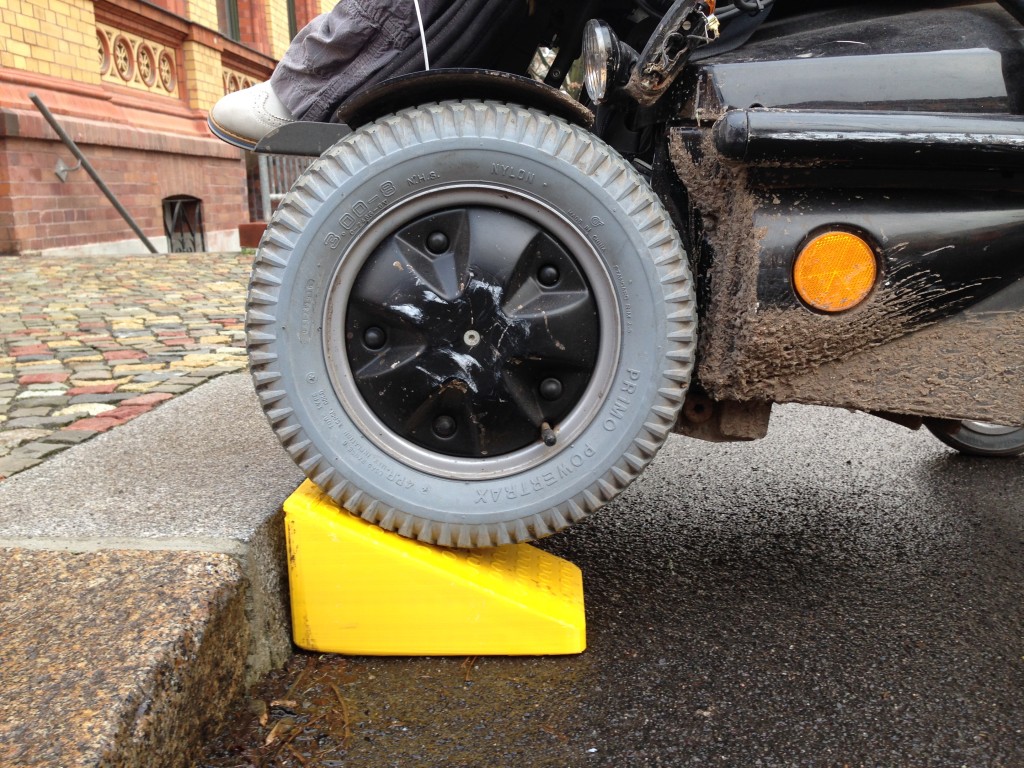
On relevant platforms such as Thingiverse, it is easy to find all kinds of 3D-models to re-print. Looking around the site, I found the „Cupholder“ for wheelchairs. I thought this was a cool idea. Unfortunately, my 3D-design capabilities were not enough to refine the Cupholder to meet my requirements, specifically, my wheelchair. To date, relatively few items designed for wheelchairs are available on Thingiverse.
So I began experimenting with some basic shapes, and it dawned on me pretty quickly that I could print two wheel chocks that would help me ride up small steps in my power wheelchair. The ramps should be large enough to allow you to ride up a decent-sized step, yet small enough and light enough to fit into the back pocket of the wheelchair.
The first attempt promptly failed, as the chocks were too steep. With the help of my buddy, Benni from Kickerverleih 5meter.de, we optimized the shape, reduced the steepness, added a non-slip surface for the wheels, and experimented with stability.
The result was the following ramp
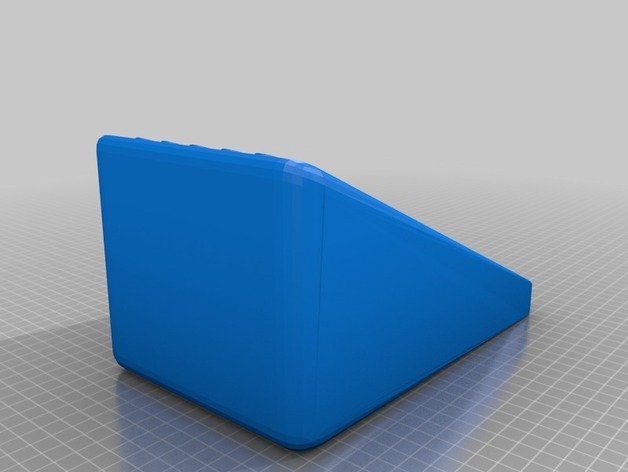
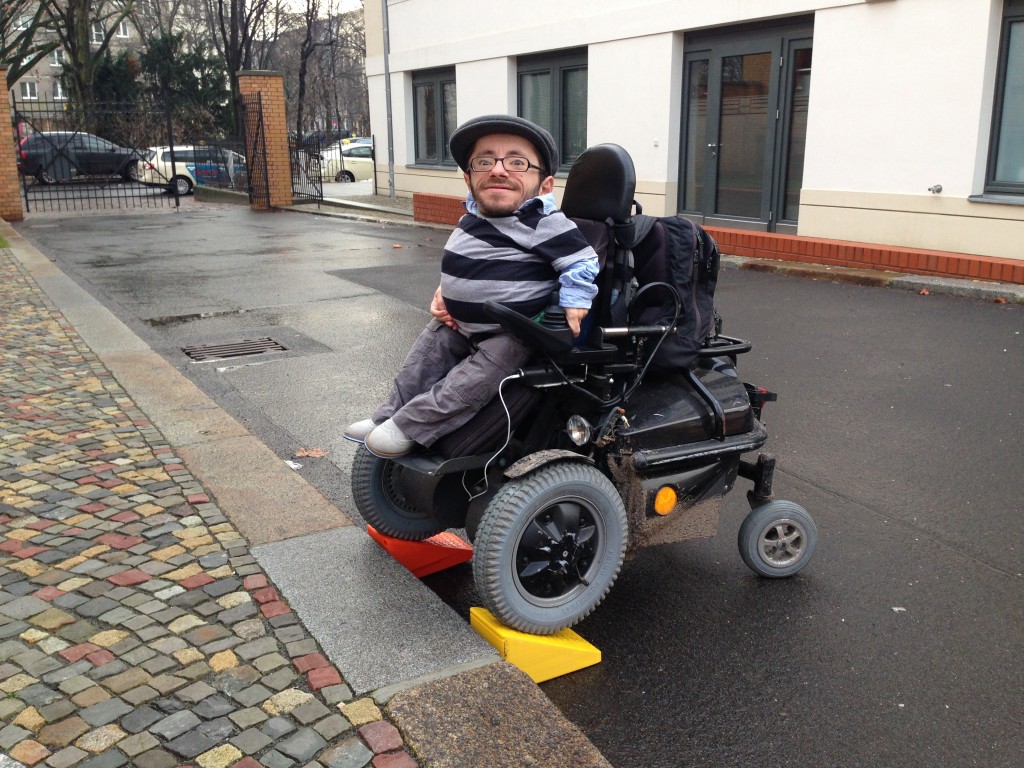
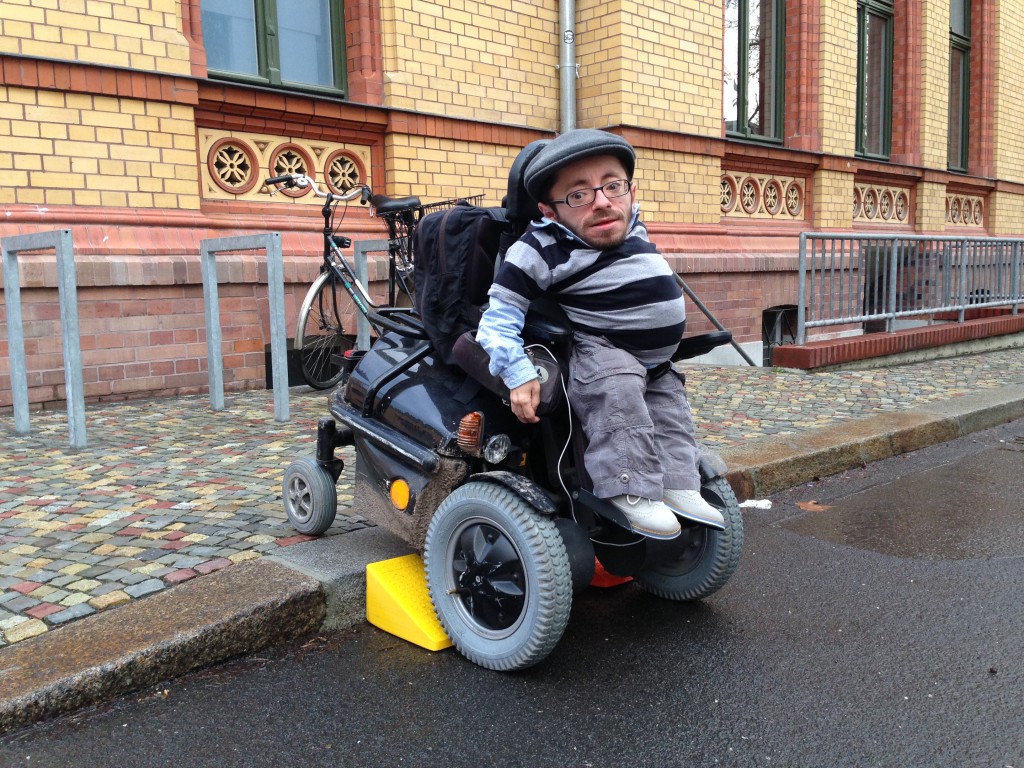
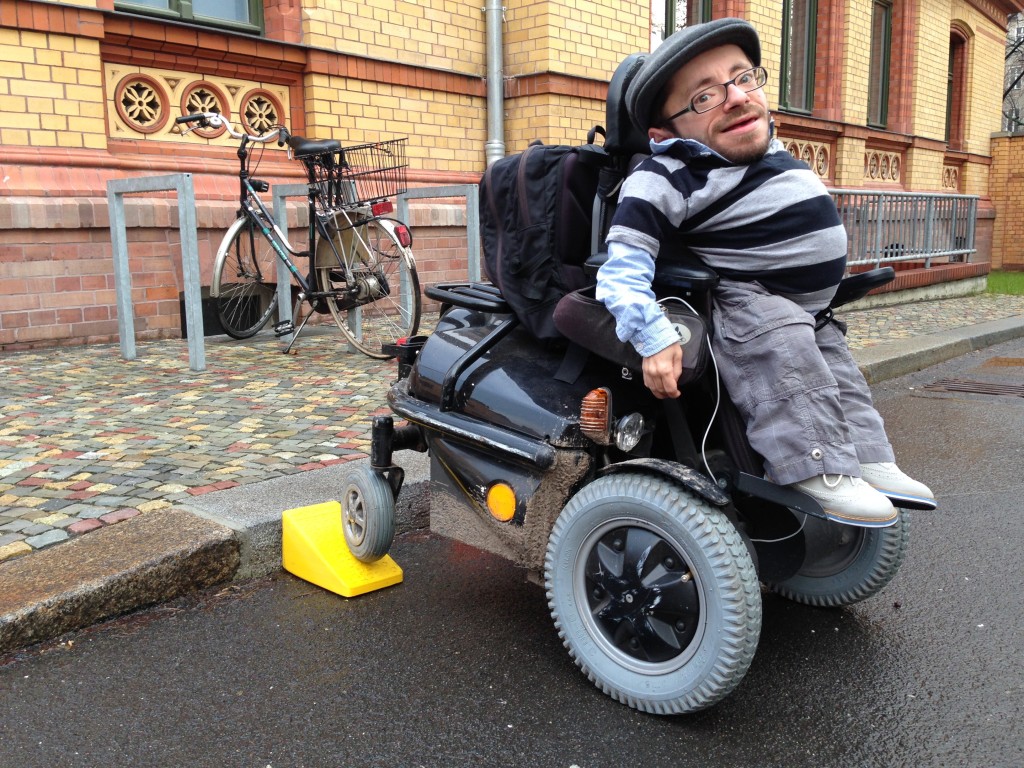
Warning! Prototype!
Please keep in mind that we are dealing with a prototype here. Every copy and re-print is at your own risk!
What can be improved
- Rubber surface for the bottom of the ramps to prevent sliding during descent
- Infill should be set at 20% as to prevent the ramp from breaking
Once the prototype has matured, plastics companies such as Mertl or Tischlern could be approached to see if they would produce a small series of real ramps.
Costs
The 3D-printer is the most expensive item of this venture:
- Current price of MakerBot Replicator 2 is approx. USD 2000.
- A 50-dollar spool of plastic will produce approx. 2-3 ramps.
- Printing time is approx. 26 (!) hours, assuming all goes well.
- You can download the 3D-model of our ramp at Thingiverse.
If you do not own a 3D-printer, you can search for printers in your area at 3dhubs.com and, at your own risk, make a copy of or make improvements to the model. It would be great if the results were shared among everyone else. Just post the links in the Comments section.
Please do NOT apply for a patent!
It was suggested in facebook-comments that I should patent this product. I don’t think that is a good idea. This project is just an idea for all those interested in craftsmanship.
Alternatives
Some of my friends on Facebook-, twitter- and Google+– suggested building the ramp on the LEGO principle. The ramps could be assembled with 100 „Roof Tile 3X4/25°„- and 100 „2×4„-pieces and be customized to fit individual steps.

Price point at approx. 50 €
Of course, using wood or aluminum to build the ramps is another option. However, they will usually be heavier. But I will be happy if you prove me wrong!
6 Antworten zu “Printing a mini-wheelchair ramp yourself with a 3D-printer”
It may be possible to add a telescopic rod in the middle that collapses for storage and fits the wheelchair’s width perfectly when fully deployed. Maybe it can also have a center loop for a rope so that people don’t have to bend too much and can use only one hand to pick it up.
This is quite an interesting challenge. Perhaps there is a way to attach the ramps to your wheelchair. A hydraulic grabber that holds the ramps in place and retracts them after? I’m no engineer but I guess this goes beyond the capabilities of the markerbot.
I just got a Robo 3D R1 Plus and and am a wheely, too. Recessed hooks on either side of the ramp to which a thin cord can be adjusted for wheel spacing would aid in placement and retrieving ramps. A hinged plate that snaps open/closed can be added ti the top of the ramp that would serve as an anchor once the drive wheel is on it would prevent ramp from slipping. A means of adjusting height (somewhat) is needed. I need help to try these but an hopeful that I’ll find some. Portable, universal and adjustable wheelchair ramps are SOOOO needed! Thanks for giving this a start!!!
Hey Raul!
Thanks for this nice idea, here is my take at it.
http://www.thingiverse.com/thing:2064891
Bye!
[…] for those in wheelchairs to explore and navigate their communities and cities. For example, these 3D-printed wheelchair ramps are lightweight, portable, strong, and durable, making them the perfect tool for those with […]
I just want to say that I think your idea is brilliant and I am sure you will come up with other great ideas. Have you tried belt printers, like the Creality CR-30? I just bought one and for this project is just the right thing.
Thankyou for the inspiration.